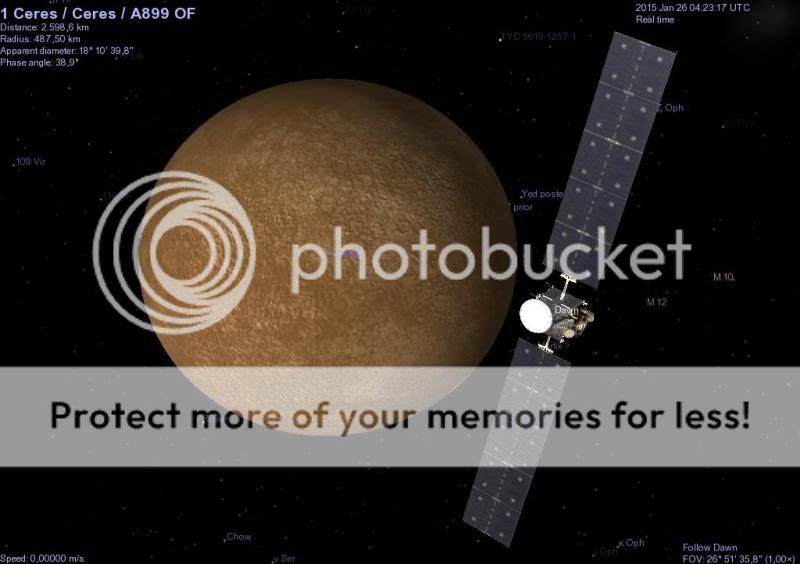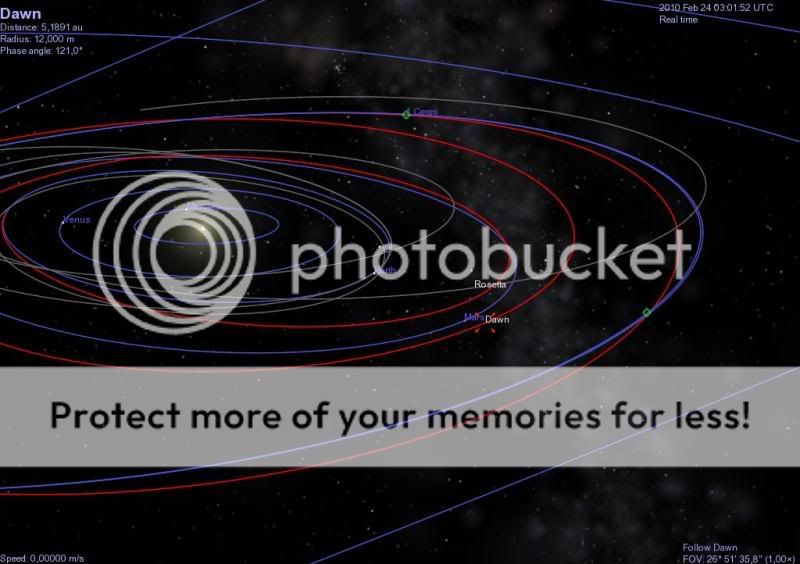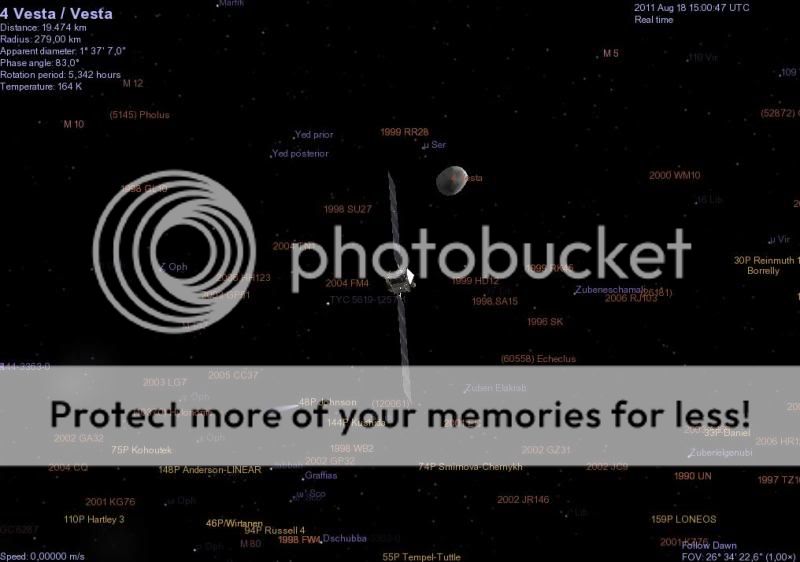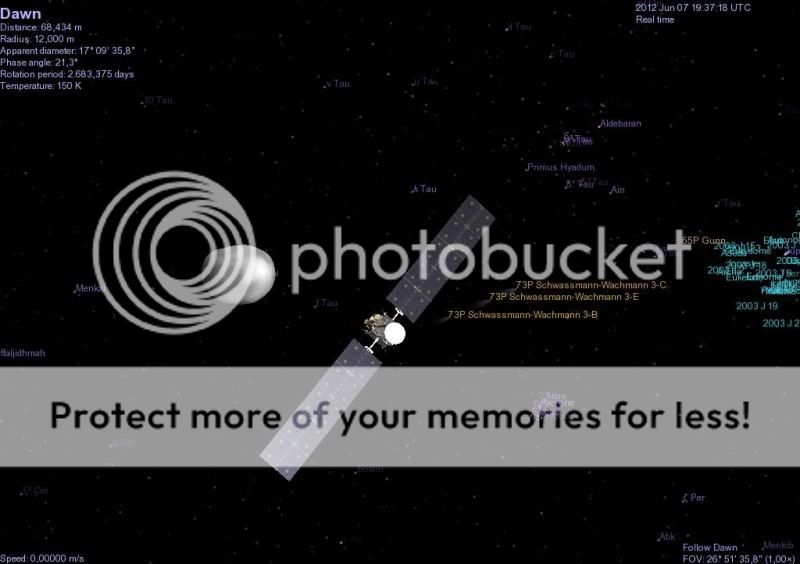Sept 27th update.
http://dawn.jpl.nasa.gov/mission/journal_9_27_09.asp
"In its interplanetary travels, the spacecraft has thrust for a total of about 389 days, or 53% of the time (and about 0.000000008% of the time since the Big Bang). While for most spacecraft, firing a thruster to change course is a special event, it is Dawn’s wont. All this thrusting has cost the craft only 103 kilograms (228 pounds) of its supply of xenon propellant, which was 425 kilograms (937 pounds) on September 27, 2007.
The thrusting so far in the mission has achieved the equivalent of accelerating the probe by 2.62 kilometers per second (5870 miles per hour). As previous logs have described, because of the principles of motion for orbital flight, whether around the Sun or any other gravitating body, Dawn is not actually traveling this much faster than when it launched. But the effective change in speed remains a useful measure of the effect of any spacecraft’s propulsive work. Having accomplished only one-fifth of the thrust time planned for its entire mission, Dawn has already far exceeded the velocity change achieved by most spacecraft."
Due to better calibration of the solar array available power, more thrusting time has been available. As a result:
"The probe will be able to reach Vesta about 6 weeks earlier than had previously been planned. Moreover, the newfound capability will enable the craft to travel from Vesta to Ceres more quickly, so the deadline for leaving the first world to reach the second on schedule in 2015 is about 6 weeks later. Together, these changes allow the explorer to increase its planned 9-month stay at Vesta to 12 months."
Orbnital Info:
Minimum distance from the Sun (AU) : perihelion
Maximum distance from the Sun (AU) : aphelion
Angle from Earth’s orbit
Dawn's orbit on Sept. 27, 2007
(before launch, i.e. earth's orbit)
0.98 AU
1.02 AU
0.0°
Dawn's orbit on Sept. 27, 2007 (after launch)
1.00 AU
1.62 AU
0.6°
Dawn's orbit on Sept. 27, 2008
1.21 AU
1.68 AU
1.4°
Dawn's orbit on Sept. 27, 2009
1.42 AU
1.87 AU
6.2°
Vesta's orbit
2.15 AU
2.57 AU
7.1°
Ceres's orbit
2.54 AU
2.99 AU
10.6°












